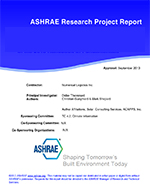The continually increasing global energy consumption has led to pressing problems such as global warming that may lead to disastrous consequences. A significant proportion of the total energy consumption of the world goes towards operation of air-conditioning systems. Hence, making air-conditioning systems more energy efficient would considerably curtail the overall energy consumption due to human activities. A number of researchers have come up with energy-efficient air-conditioning solutions involving the use of desiccants, which largely incorporate the use of low grade waste heat or solar energy rather than electricity. However, issues such as bulkiness of the systems, high initial cost and long pay-back periods, difficulty with retrofitting, non-availability or inconsistent availability of heat sources make such solutions’ market penetration rather challenging. In contrast to the generally used desiccant wheel or solid desiccant beds in desiccant assisted air-conditioning systems, this paper proposes a desiccant coated oblique fin plate-frame structure that may be retrofitted into existing air-ducts. Also, regeneration of desiccant material is achieved by heating of the solid plate frame structure onto which desiccant is coated, rather than heating the air that eventually passes over the desiccant; thus reducing the thermal resistance and consequently the required regeneration temperature of the heat source used for desiccant regeneration. Numerical simulations are carried out in this paper. Inlet air temperature and humidity conditions are chosen to represent typical Singapore weather conditions. This study suggests the use of oblique fin plate-frame structure to be a plausible alternative to conventional desiccant based air-conditioning solutions.
Citation: 2017 Winter Conference, Las Vegas, NV, Conference Papers
Product Details
- Published:
- 2017
- Number of Pages:
- 8
- Units of Measure:
- Dual
- File Size:
- 1 file , 1.6 MB
- Product Code(s):
- D-LV-17-C077


